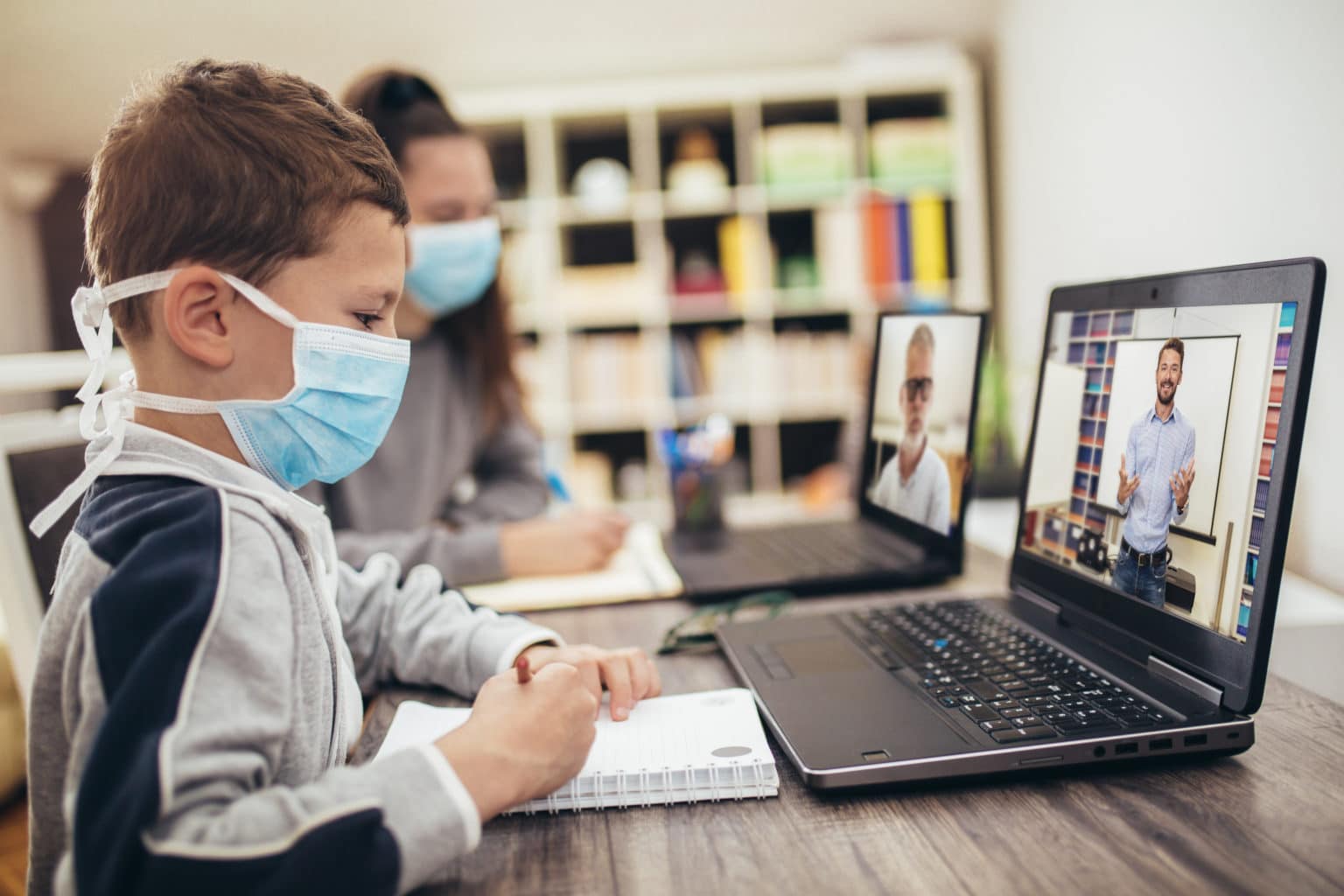
Class is the next generation virtual classroom for K-12, higher education, government agencies, and the workplace. Contact us today to schedule your live demo and see Class in action.

Class is the next generation virtual classroom for K-12, higher education, government agencies, and the workplace. Contact us today to schedule your live demo and see Class in action.

As COVID-19 continues to require many school systems and higher education institutions to provide some form of hybrid instruction which is likely to continue for the foreseeable future, how can school administrators—at both the K-12 and higher ed levels—help instructors, staff, parents and students adapt to a hybrid school schedule or structure?
First and foremost, teachers, staff, students, parents and others are concerned about safety during the pandemic. Will it be safe to physically come back to the classroom, even on a limited basis? What safety precautions is the school taking? What safety precautions should teachers, staff and students take? Addressing these concerns up front and keeping all audiences informed of any changes in approach or direction is an important first step for paving the way for other messages.
That’s really consistent with what Maslow’s hierarchy of needs has told us for decades—basic physiological and safety needs must be addressed before people are ready to move on to higher-level needs. That’s certainly true in classroom environments as well.
The CDC offers information and resources for schools during the pandemic that are updated frequently. This is a good starting point for advice and information on steps to take and how to communicate safety precautions to various audiences.
Dr. Michael Vinella is a faculty member in Walden University’s Doctor of Education program and has 26 years of experience in education, serving as a classroom teacher, building administrator and central office administrator, and as a high school principal. “Concurrent learning is emerging as teachers are meeting the students’ needs in person and virtually, simultaneously,” says Vinella. The new hybrid environment, he says, requires new approaches he says:
These shifts are impacting everyone involved in education. Administrators can play a key role in ensuring that teachers, staff, parents, and students are prepared for a hybrid school schedule, that students are prepared to engage in-person and online, and that teachers can effectively manage their hybrid classrooms and virtual learning.
One foundational element to ensure success: communication.

Communication is key, says Marian Stoltz-Loike, PhD, director of online education at Touro College and dean of Touro’s Lander College for Women. “Crazy schedules poorly communicated by administrators have been lampooned repeatedly in social media,” she says. Clear and honest communication, says Stoltz-Loike, means saying “I don’t know yet,” when answers are not available. When they are, she suggests, administrators should utilize multiple channels for communication—both online and in schools.
Zoom, a go-to tool, especially at the higher ed level, says Stoltz-Loike, should be used by administrators to hold regular town hall meetings—at least every 6-8 weeks she suggests. Using Zoom in the classroom has become commonplace, but Zoom can be used for other types of communication as well Stoltz-Loike points out. Importantly, town halls should be used not only to convey information, but also to seek and consider input from various audiences. It should be a two-way, rather than a one-way channel for understanding how to best implement hybrid school schedules.
In addition to virtual town hall sessions, other communication tactics should continue to be used. While many people are overwhelmed these days with information coming at them from all sides, Stoltz-Loike says that tools like email should continue to be used. She cautions, though, that many are suffering from email fatigue and recommends that emails are kept short, sent frequently and make use of bullet points to help make key information stand out.
Administrators shouldn’t feel as though they’re required to have all of the right answers, right now. Nor should they feel that once a decision about in-classroom or hybrid learning has been made it is no longer subject to review or reconsideration. Two very important phrases to become comfortable with:
While the phrase “these are uncertain times” has become a cliché, like all clichés the reason it’s overused is because it’s true! These are uncertain times. Administrators should make decisions now with the best information they have, communicate broadly to key audiences, listen to input from those audiences, make changes as necessary, and communicate those changes. This is not a linear journey, but an iterative one.
“It is still too early to tell what the future will hold, but it is certain that education as we know it will never be the same,” says Vinella. “The current disruptions that took place will become institutionalized in the everyday practices of teachers,” he says. “The days of being off for a snow day are likely over. Districts will be much better equipped with students that are on home instruction or out for a short period.” While the traditional face-to-face school may return, there will continue to be a need for a hybrid classroom approach, he says. Virtual learning is here to stay. Using Zoom in the classroom—and for other forms of communication with key audiences—can be an important tool for navigating this uncertain terrain.

Class is the next generation virtual classroom for K-12, higher education, government agencies, and the workplace. Contact us today to schedule your live demo and see Class in action.

Class is the next generation virtual classroom for K-12, higher education, government agencies, and the workplace. Contact us today to schedule your live demo and see Class in action.
Get our insights, tips, and best practices delivered to your inbox

Sign up for a product demo today to learn how Class’s virtual classroom powers digital transformation at your organization.

Features
Products
Integrations